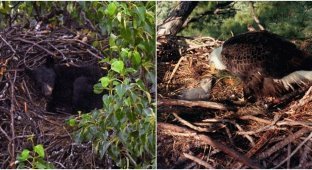Himalayan bear: an animal that lives in the mountains and builds dens right in the trees (11 photos)
Himalayan, white-breasted, or Asiatic black bears are one of the most unusual members of the bear family. 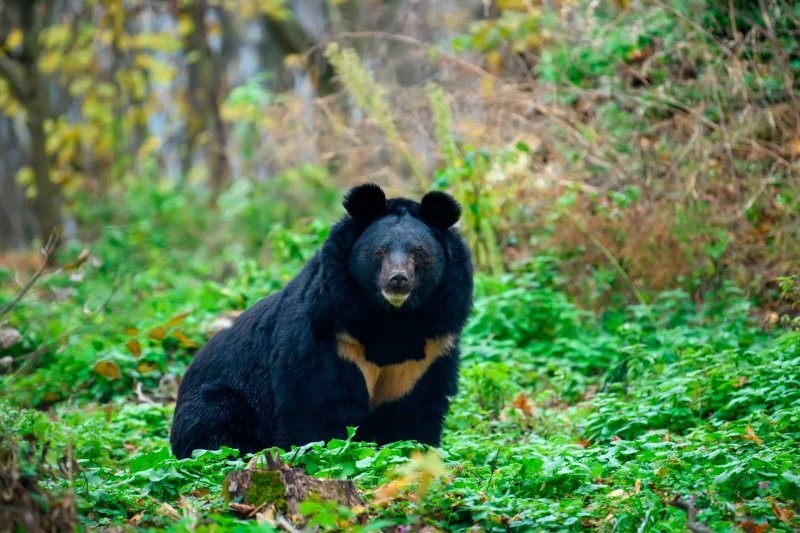
Do you know how legends about snowmen and similar stories are born? From great stupidity and ignorance of the nature of one’s own country! Have you heard, for example, stories about “many strange broken branches, huge nests at the very tops of trees, strange hairy people that quickly run away when you notice them”? So, these are not yeti, these are just ordinary Himalayan bears. And yes, they build mega-nests in trees - simply because they live there! 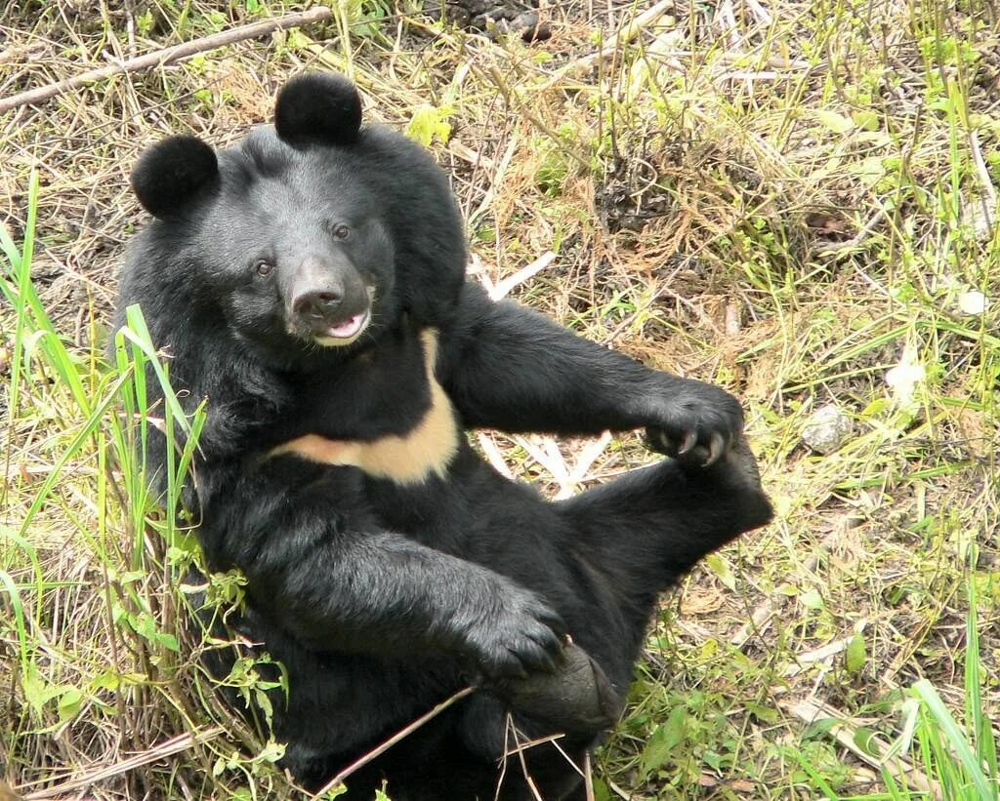
The clubfooted ones look just like soft toys come to life: rich black color, silky shiny fur and funny protruding ears. Lovely! 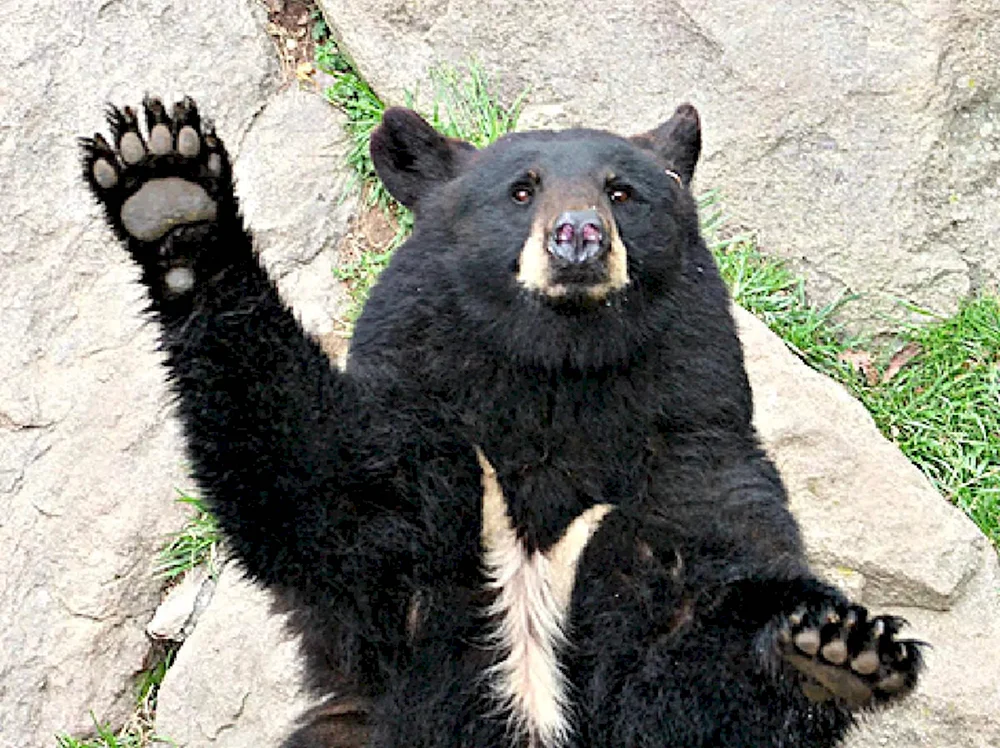
But there are individuals with an even more unusual appearance - lunar golden bears. Yes, it sounds like the name of a fairy-tale character, but such individuals also look magical! Most of their body is colored beige-golden, while the fur on the nape and neck remains dark brown. This is how the bear turns into an elegant lion! True, this phenomenon is so rare that it is still not reliably clear why clubfooted animals turn lighter. Some attribute to such bears a mutation of leucism, in which the color and skin of the animals are significantly lightened. In any case, it looks absolutely amazing! 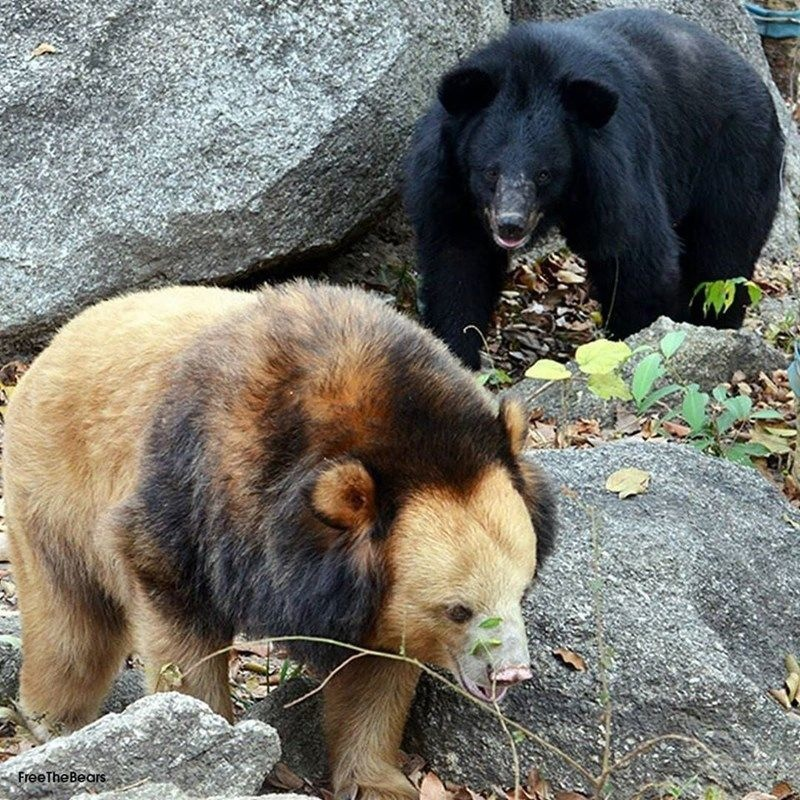
The dimensions of the Himalayans are also toy-like compared to other clubfooted animals. Adult males barely reach a meter at the withers and in their best years weigh a maximum of 150-190 kg. For comparison: large brown bears weigh twice as much, and polar bears can eat up to 800 kilos!
In general, the white-breasted clubfoot looks lovely! But his life is not at all fabulous. They get it from everyone in the area! 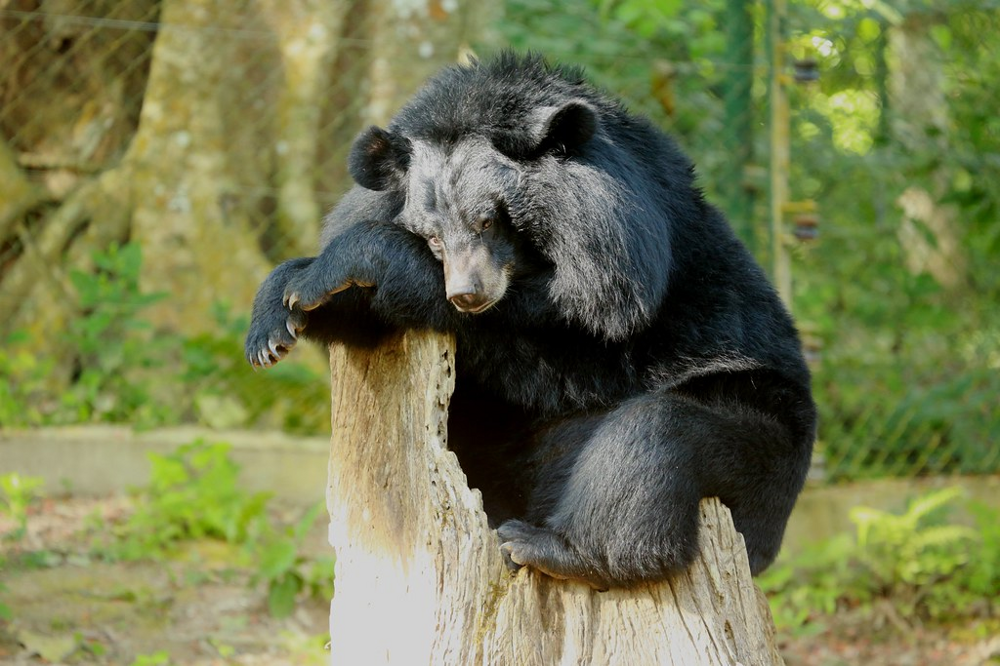
Take a photo like I'm a beauty from a dating site
You can meet the bear in Central Asia and the Far East - from Iran and Afghanistan to Taiwan and Japan. Within these territories, the animal is found only in the highlands - not lower than 900 meters above sea level. And in the summer, woollies generally manage to climb beyond the upper border of forests, where there are alpine meadows and 4000 meters above the sea. And such fastidiousness to environmental conditions has its downsides. More precisely, there are two of them: predators and cutting down trees.
The whole point is that a harmless teddy bear ends up on the menu of larger predators: Amur tigers, wolves and brown bears. The only place where clubfooted animals can hide from all adversity is a tall tree. 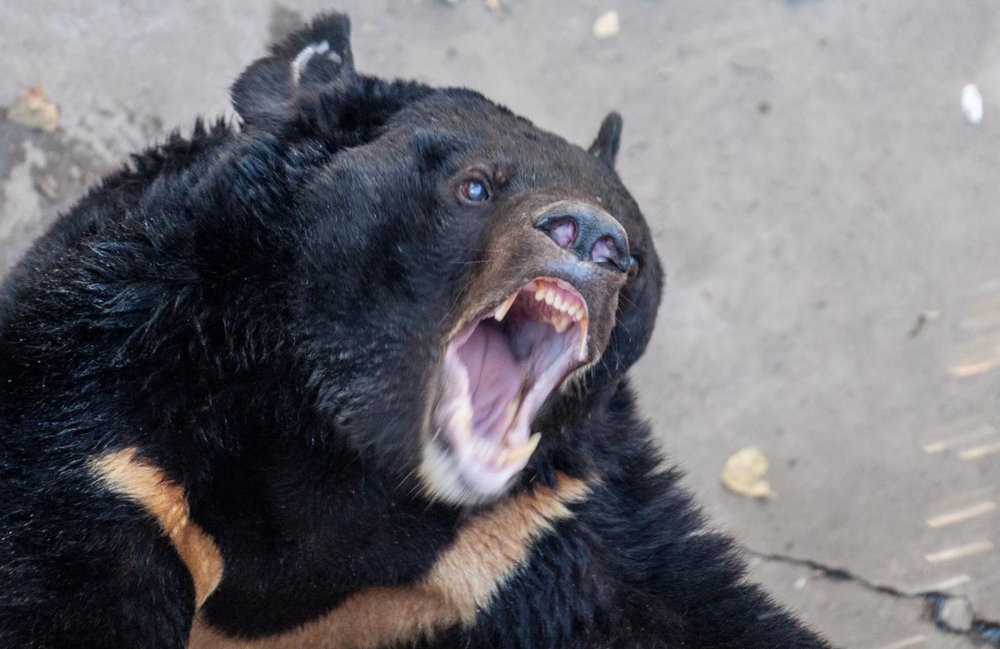
Despite the fact that the Himalayan bear is weaker than other predators in its range, it attacks humans more often than other types of bears. It is believed that aggression is a defense mechanism formed against tigers and brown bears.
There, in the crowns, the clubfoot feeds. The animal easily climbs to the top of any head, tearing off ripe fruits, nuts, and fruits. Although Himalayans are not pandas, their diet is 85% exclusively vegan. The remaining 15% consists of seasonal insect larvae, honey, small vertebrates, carrion, someone's stolen prey, and very rarely - large ungulates killed with their own paws. 
And on the branches you can calmly think about lofty things!
The Himalayan bear also rests and hibernates in a tree! The animal’s den is prepared in the hollow of a large trunk, at an altitude of 4 to 20 meters. The bears clear and expand the nest, trample the floor and make themselves comfortable. A wintering place can be a hole in the ground, a cave, or an old huge stump, but sleeping on the ground for the winter is very dangerous - remember about tigers. 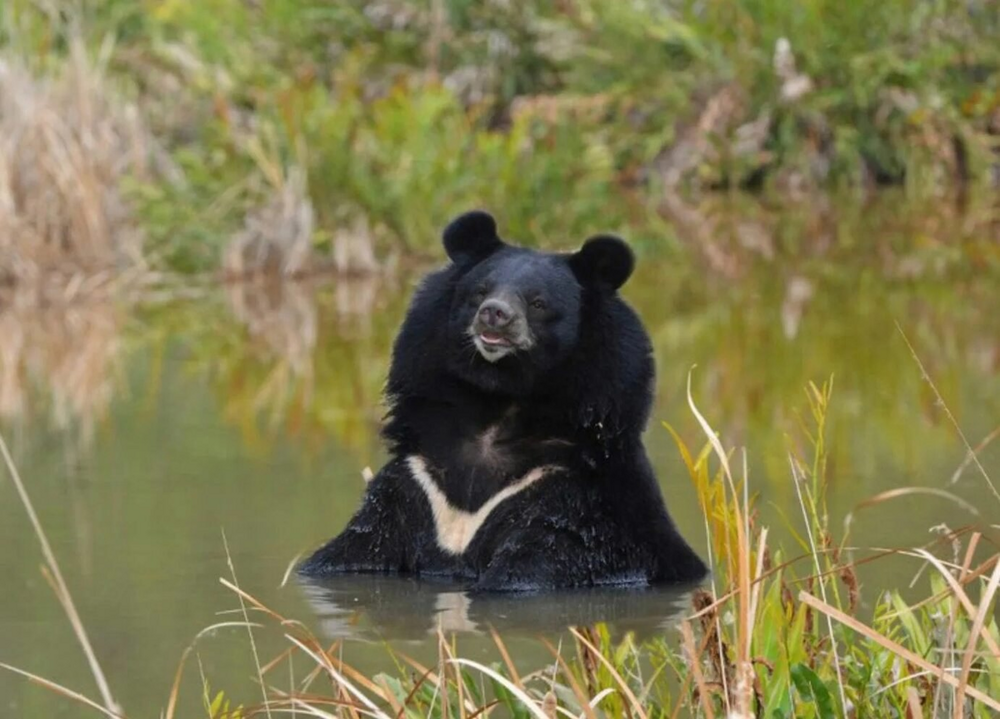
In their winter resting room, the animals spend the coldest time - from November to March. Males come out early, females a little later, and those female bears that managed to bring a couple of adorable cubs during this time are the last to wake up. Sleepwalking babies are born very tiny - only 400 grams. 
Children grow up slowly: moBreastfeeding for Himalayan bears lasts a little over a year, and the mother watches the baby for up to three years. This explains the slow pace of population recovery, because in 25 years of her life a female can give birth to only 14 babies. And this takes into account not 100% survival rate. 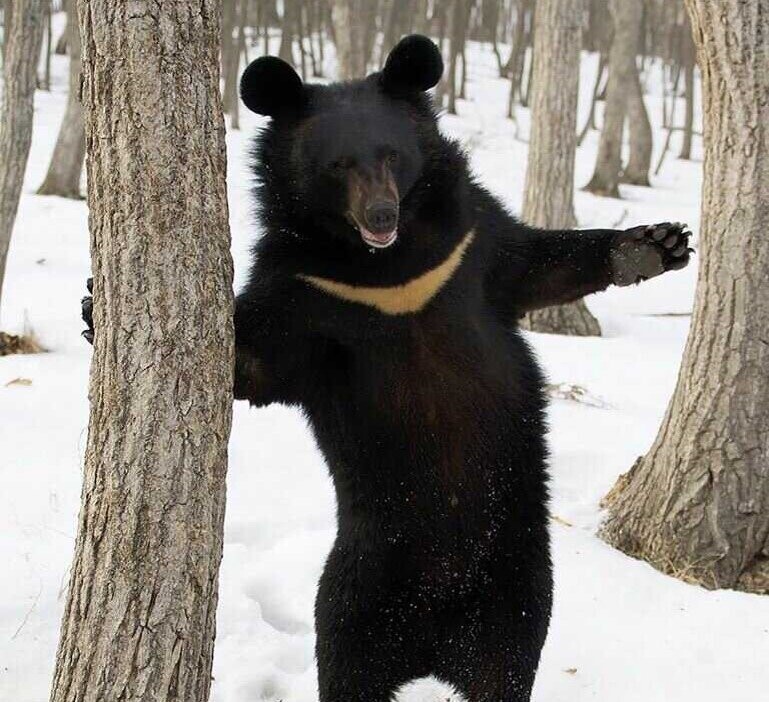
As you understand, trees mean more to these bears than to any other species. Therefore, active deforestation is the main factor putting the species at risk of extinction. People also add fuel to the fire. Firstly, hunting of the endangered bear species is still allowed in some countries. And secondly, the gall bladder of Himalayan (and not only) bears is worth its weight in gold on the traditional medicine market: in 2009, one kilogram of this product cost about $50,000! 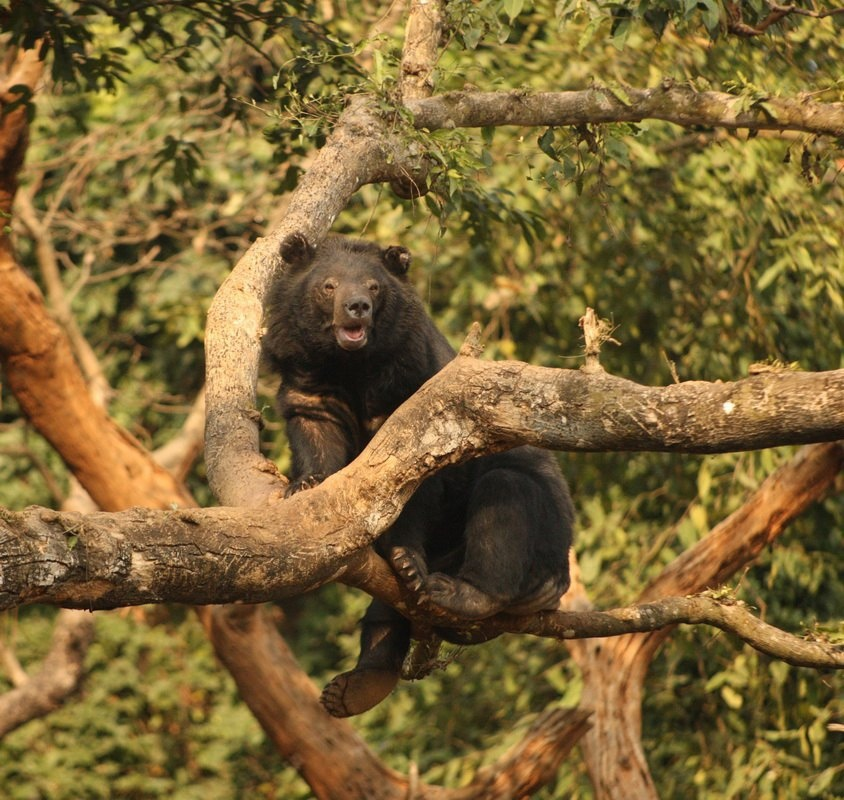
I can’t hide anywhere from you people! Even in the trees!
You can't shoot so many animals in the forest. That's why enterprising (in)people chose a new way to make fun of animals. Wild bears are placed in “kennels” where they are fitted with special catheters to collect bile. Naturally, after such manipulations, bears live short and unhappy lives, but do greedy people really care?












